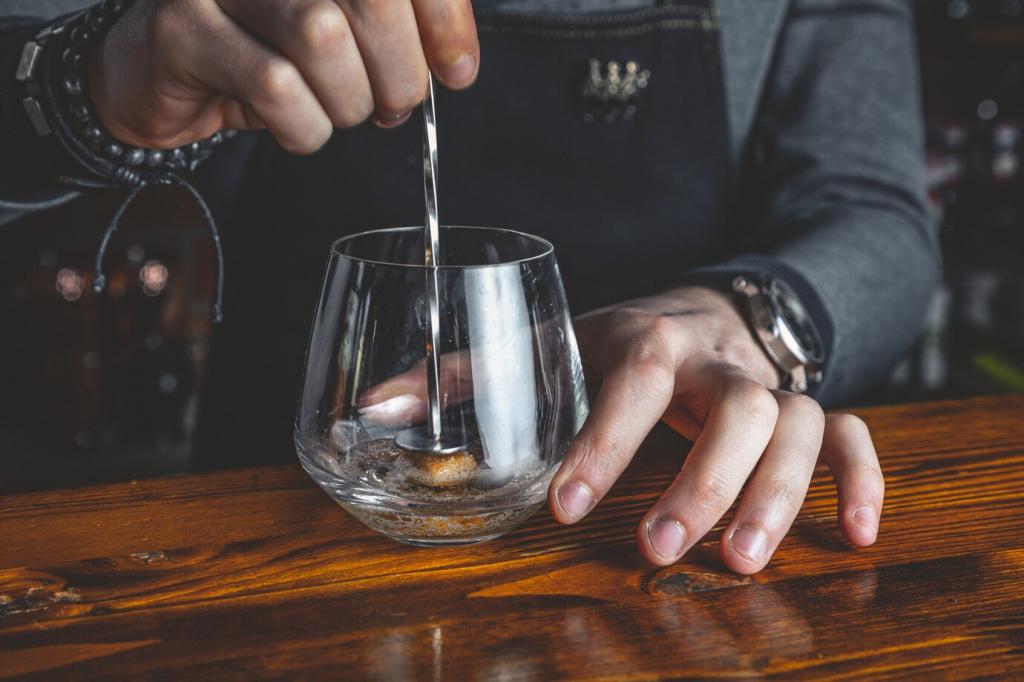Comparing Whiskey and Wine Flavors: A Journey Through Aroma, Texture, and Time
Chosen theme: Comparing Whiskey and Wine Flavors. Step into a welcoming space where grain meets grape, oak meets terroir, and your senses take the lead. Join us as we explore parallels and contrasts that make tasting both categories deeply memorable—share your impressions, subscribe for new comparisons, and help shape our next tasting flights.

Aroma Wheels Aligned: From Oak to Orchard
Oak Signatures: Vanilla, Toast, and Char
Both whiskey and barrel-aged wine absorb vanillin, toast, and spice from oak. Whiskey’s charred barrels amplify caramel and smoke, while wine’s toasted staves lean toward baking spice and subtle vanilla. Sniff them side by side and comment on which oak note feels warmer or brighter.
Fruit Spectra: Dried, Fresh, and Jammy
Wine often expresses fresh orchard and berry fruit, while whiskey leans dried—apricot, fig, or raisin—especially in sherry-influenced styles. Notice how a zesty Sauvignon Blanc contrasts with a sherry-matured single malt’s figgy richness. Which fruit lane wins your palate today?
Spice, Herbal, and Earthy Notes
Clove, cinnamon, dill, eucalyptus, and forest floor can appear in both, yet intensity varies. Rye whiskey may shout pepper and baking spice, while Pinot Noir whispers underbrush and tea. Share a moment when a subtle herbal note suddenly became the star of your glass.
Aging Alchemy: Time, Barrel, and Oxygen
Barrel Choices and Heat Treatments
Whiskey often relies on new charred American oak, delivering bold caramel and vanilla, while wine frequently uses toasted French oak for structure and spice. Compare a heavily charred cask whiskey with a lightly oaked Chardonnay, then tell us which treatment feels more elegant.

Technique Matters: Tasting Side by Side
Use a tulip glass for whiskey to focus aromatics, and appropriate stems for wine to reveal nuance. Serve whiskey slightly cool, wine at varietal-appropriate temperatures. Small adjustments transform perception; tell us which temperature tweak unlocked a hidden detail for you.
Fat, Protein, and Texture Interplay
A rich steak softens wine tannins, while fatty meats can cushion whiskey’s heat and reveal sweetness. Try ribeye with Cabernet versus rye whiskey; note how texture guides your preference. Which combination makes the main course sing without overpowering the plate?
Sweetness, Heat, and Balance
Spicy dishes crave sweetness or fruit; off-dry Riesling excels, but a honeyed bourbon can also soothe heat. Compare how each handles chili-driven burn. Leave a tip for readers seeking harmony in fiery weeknight meals.
Cheese and Dessert Decisions
Aged cheddar loves peaty whiskey’s smoke, while blue cheese often embraces Port-style sweetness in wine. For dessert, test dark chocolate with high-cacao content against a sherry-finished malt and a late-harvest wine. Which dessert duet made you smile widest?
Crossroads of Casks: When Worlds Meet
Whiskeys matured in ex-sherry casks borrow raisin, fig, and walnut tones familiar in fortified wines. Taste those dried-fruit arcs next to an actual Oloroso. Does the whiskey mirror, amplify, or reinterpret the wine’s signature?


Crossroads of Casks: When Worlds Meet
Some whiskeys rest briefly in ex-Cabernet, Port, or Sauternes barrels, layering red fruit, honey, or marmalade tones. Compare a Sauternes-finished malt with a glass of Sauternes to map overlaps. Which finish felt most seamless to you?
Build Your Comparative Vocabulary
Record nose, palate, and finish for both glasses, plus texture, balance, and emotional reaction. Use consistent scales for sweetness, acidity, tannin, and heat. Post a snapshot of your notebook layout to inspire fellow tasters.
Build Your Comparative Vocabulary
Run blind flights with one wine and one whiskey sharing an aroma theme—vanilla, red fruit, or smoke. Compare accuracy with friends, then discuss why certain notes fooled you. Tag us with your scorecards to join the leaderboard.


